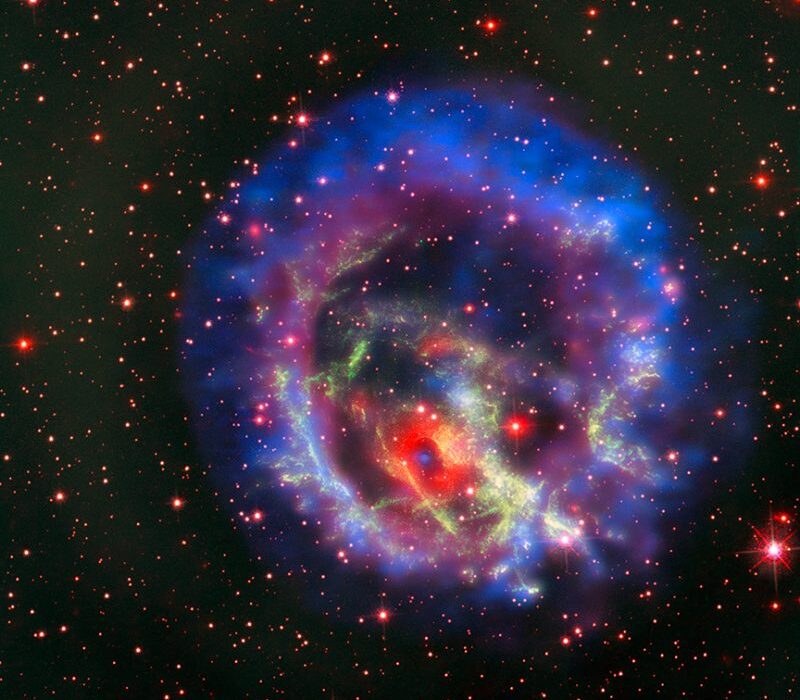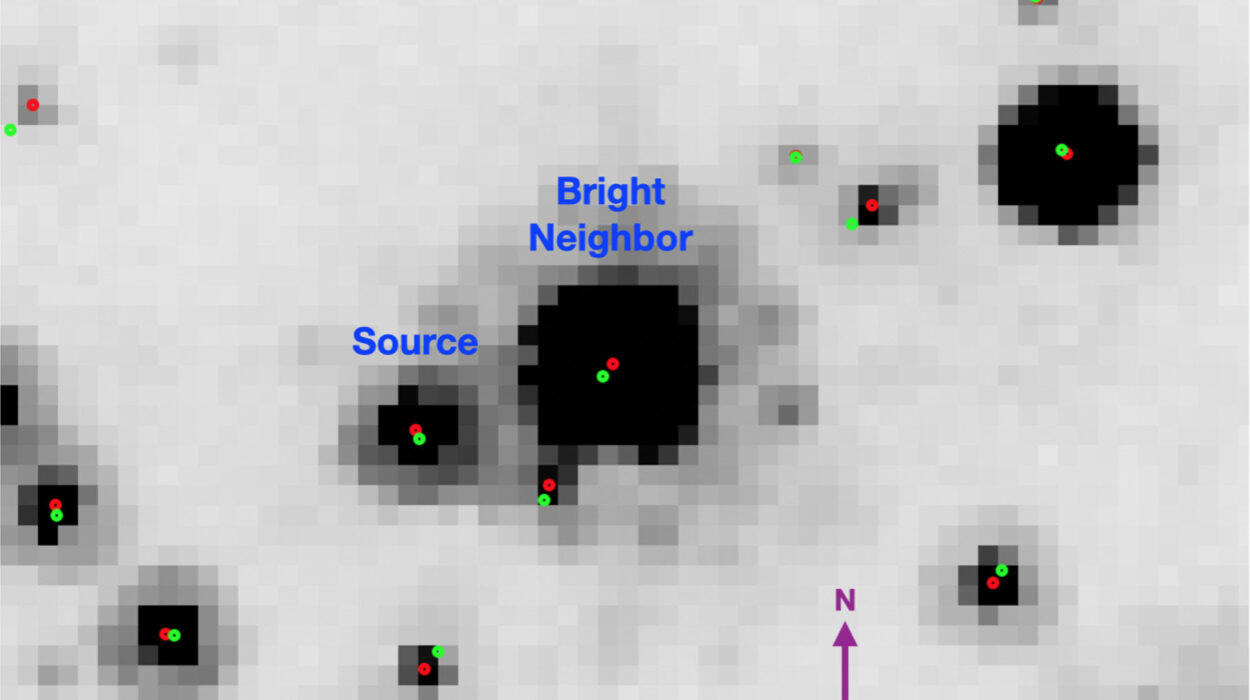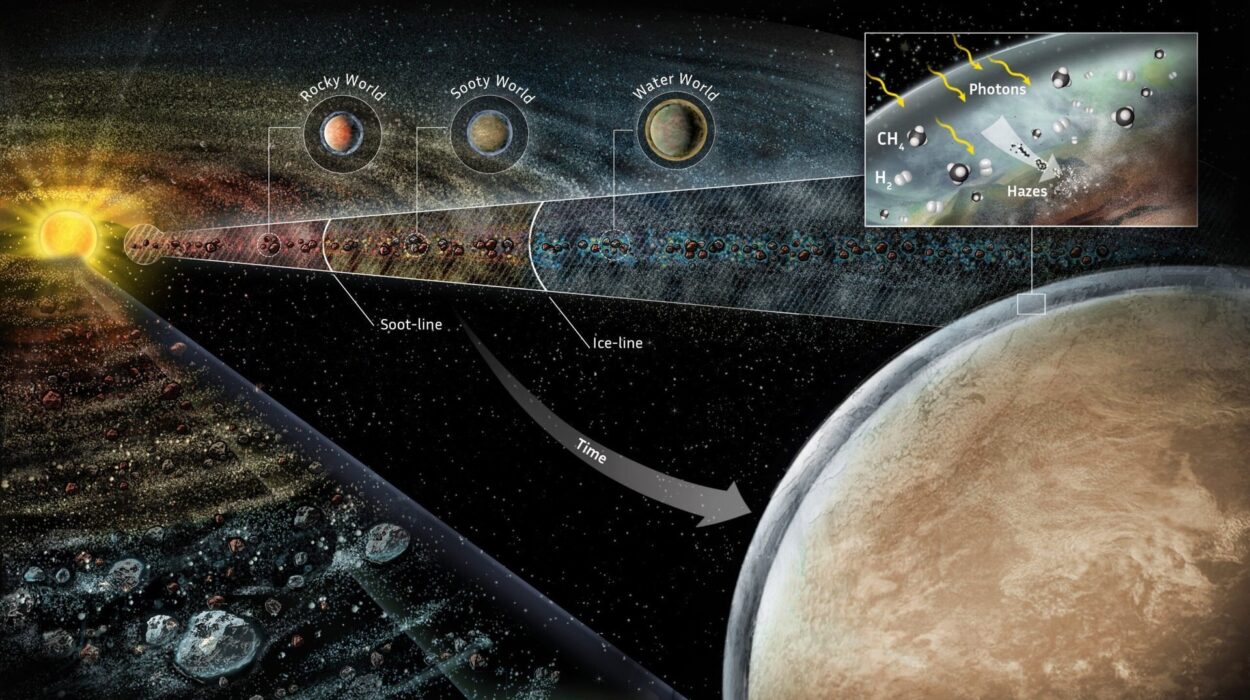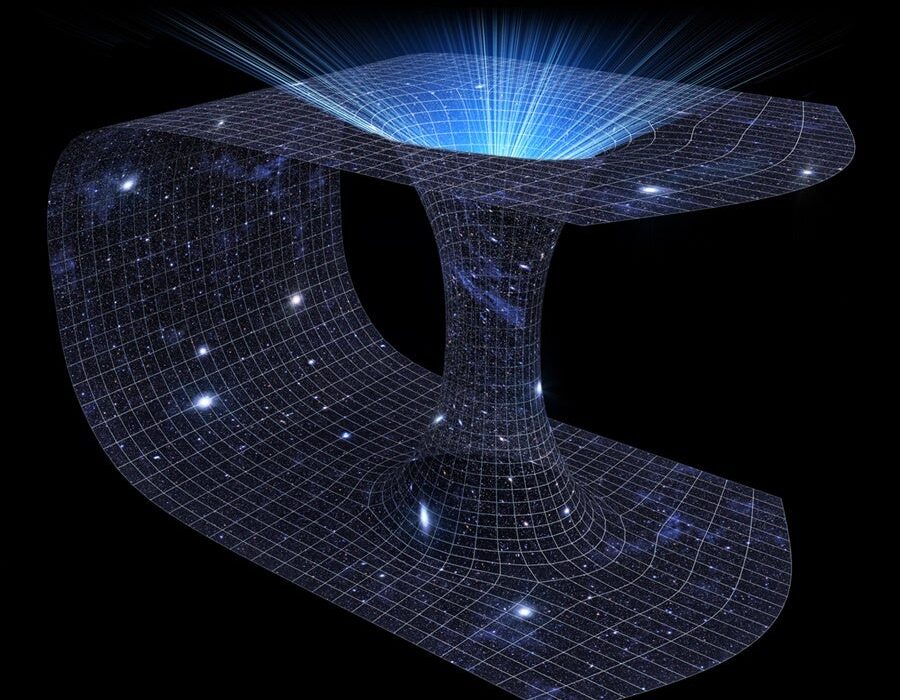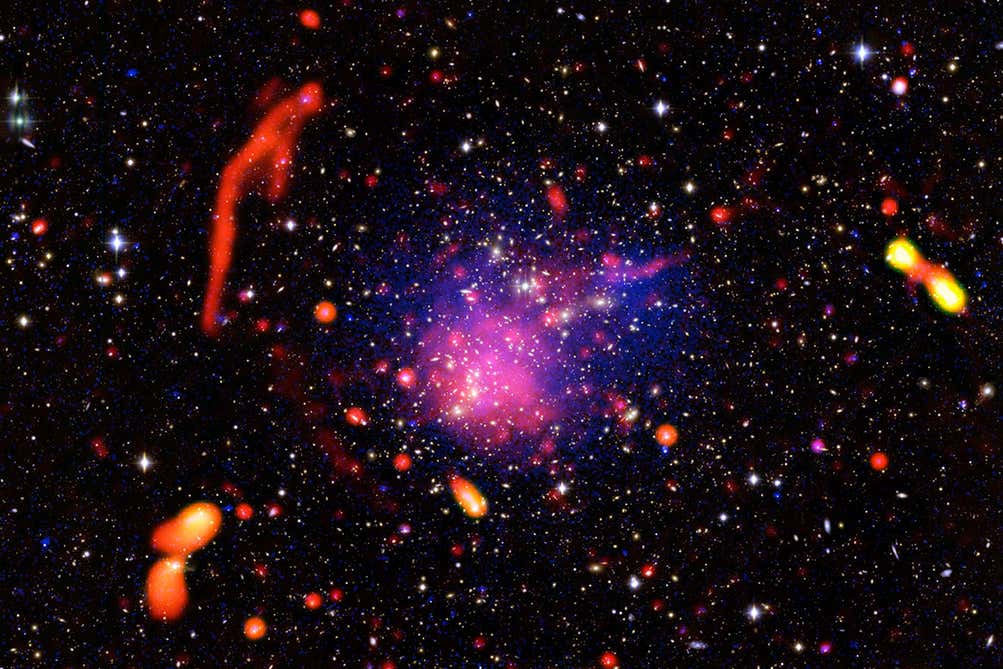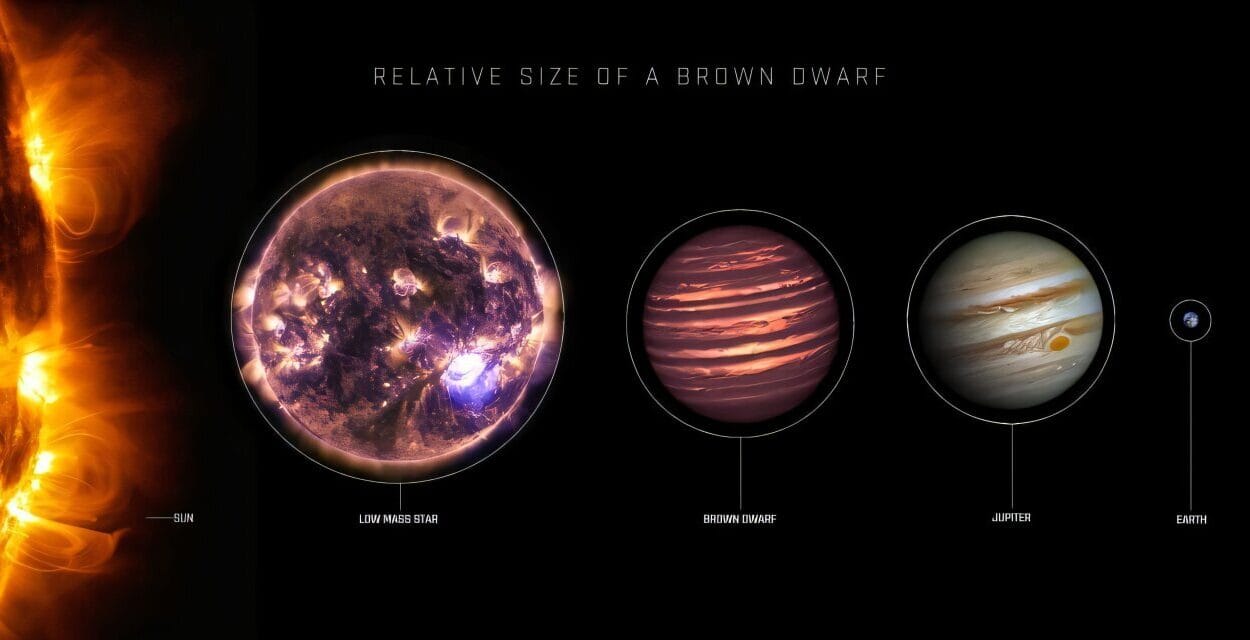On a warm day in July 2022, humanity took a bold leap into the deep past. The James Webb Space Telescope, or JWST—a golden marvel of human engineering, glinting like a mechanical sunflower in the void—opened its eyes and peered farther back in time than any observer before it. With mirrors sculpted from beryllium and plated in gold, and sensors cooled to just a few degrees above absolute zero, JWST was designed not just to look, but to remember—to recall light that had been traveling toward us since the universe was in its infancy.
What it saw stunned even the most seasoned astronomers. There, nestled in the earliest pages of the cosmic story, only about 600 million years after the Big Bang, were a population of strange, dim, ancient objects. They didn’t shout their presence. They whispered. They glowed faintly, colored red not with fire, but with age and distance. Scientists, intrigued and baffled, began calling them the “Little Red Dots”—LRDs for short.
At first glance, the LRDs seemed to be galaxies. What else could they be? But their abundance, brightness, and unusual spectral signatures defied easy explanation. Their very existence seemed to defy what we thought we knew about how the early universe worked. They were too massive, too luminous, and far too early. If they truly were galaxies, they were born before the rules of galaxy formation, as we understand them, were even written.
Something That Shouldn’t Exist
The discovery was electrifying. The JWST, scanning a patch of ancient sky with its Near-Infrared Camera, found not just a handful but over 300 LRDs. Their light, smeared across the vast gulf of space-time, seemed to carry echoes of immense processes unfolding in the early cosmos. But there was something wrong—or at least, something unexpected. These objects were not behaving like galaxies at all.
They lacked the telltale fingerprints of active galactic nuclei—those hyper-energetic cores powered by supermassive black holes (SMBHs) that often shine like cosmic beacons in X-rays. LRDs didn’t emit X-rays. Their infrared spectra were oddly flat. They showed very little variability over time. It was as if these Little Red Dots were masquerading—appearing to be one thing, while hiding their true nature just beneath the surface.
Some scientists still clung to the idea that they were infant galaxies. Others proposed something more radical. What if they weren’t galaxies at all? What if we were looking not at cities of stars, but at individual, enormous stars themselves—ancient, theoretical titans that have never been seen before?
Whispers of Titans
The new idea was bold, but not without precedent. For decades, theorists have whispered about a class of star so massive, so luminous, and so ephemeral that it could only exist in the crucible of the early universe. These hypothetical giants, known as supermassive stars (SMS), are thought to weigh in at a staggering one million times the mass of our Sun. Unlike any stars that exist today, these primordial behemoths would burn brightly and briefly—living fast, dying young, and collapsing into the black hole seeds that would later grow into the monstrous SMBHs at the hearts of galaxies.
For scientists trying to explain how SMBHs appeared so quickly after the Big Bang—far earlier than our models predict—supermassive stars are an appealing solution. If such stars existed, they could be the missing link: short-lived titans that collapsed under their own weight to form black holes, which then fed voraciously and grew into the cosmic leviathans we see today.
But until now, they were only theory. The stuff of equations and computer simulations. Not reality. Not visible. Not proven.
Then came the JWST. Then came the LRDs.
A New Theory Emerges
In a groundbreaking paper titled “Supermassive Stars Match the Spectral Signatures of JWST’s Little Red Dots,” researchers Devesh Nandal from the University of Virginia and Abraham Loeb from Harvard and the Smithsonian Center for Astrophysics took a closer look at the mystery. What if, they asked, the LRDs are not galaxies at all—but supermassive stars caught in the final moments before their collapse?
The idea was breathtaking in its simplicity. And yet it had to be tested.
To do so, Nandal and Loeb constructed detailed atmospheric models of a supermassive star—one with one million times the mass of the Sun, composed entirely of hydrogen and helium, with no heavier elements (or “metals,” as astronomers call them). These stars would be what’s known as Population III stars, the first generation of stars born from the primordial elements forged in the Big Bang.
The simulations aimed to do more than imagine what such a star might look like. They aimed to match, point by point, the observed data from JWST’s LRDs. Could a theoretical SMS, glowing with its own photospheric light and enveloped in a dense atmosphere, replicate the spectral signatures seen in the actual data?
Amazingly, the answer was yes.
A Signature in the Light
The key lay in the details—the fingerprints of light. Astronomers don’t just look at celestial objects; they listen to their songs. Every star, galaxy, or nebula emits a spectrum—a pattern of light that reveals temperature, composition, structure, and motion.
For the LRDs, the signature was strange. It showed a strong, broad emission line for hydrogen beta (Hβ), and several absorption features from other Balmer lines. This combination was unusual. It did not look like a standard galaxy. It didn’t match the spectra of active galactic nuclei either. But it did match the model of a supermassive star with a vast, dense, extended photosphere—a star on the brink of gravitational collapse.
Nandal and Loeb tested their model against two of the best-known LRDs: MoM-BH-1* and The Cliff, both prominent in recent scientific literature. In both cases, the spectral fingerprints matched.
That match was the turning point. It meant that, at least in theory, we might not be seeing early galaxies at all. We might be witnessing the direct light of collapsing stars that were never meant to live long—and have never been seen before in the history of astronomy.
A Moment Before Collapse
What makes this discovery so poignant is its transience. According to the researchers, the final stage of a supermassive star’s life—the point where it becomes luminous enough to appear as an LRD—lasts only a few thousand years. In cosmic terms, that is an eye-blink. A cosmic whisper.
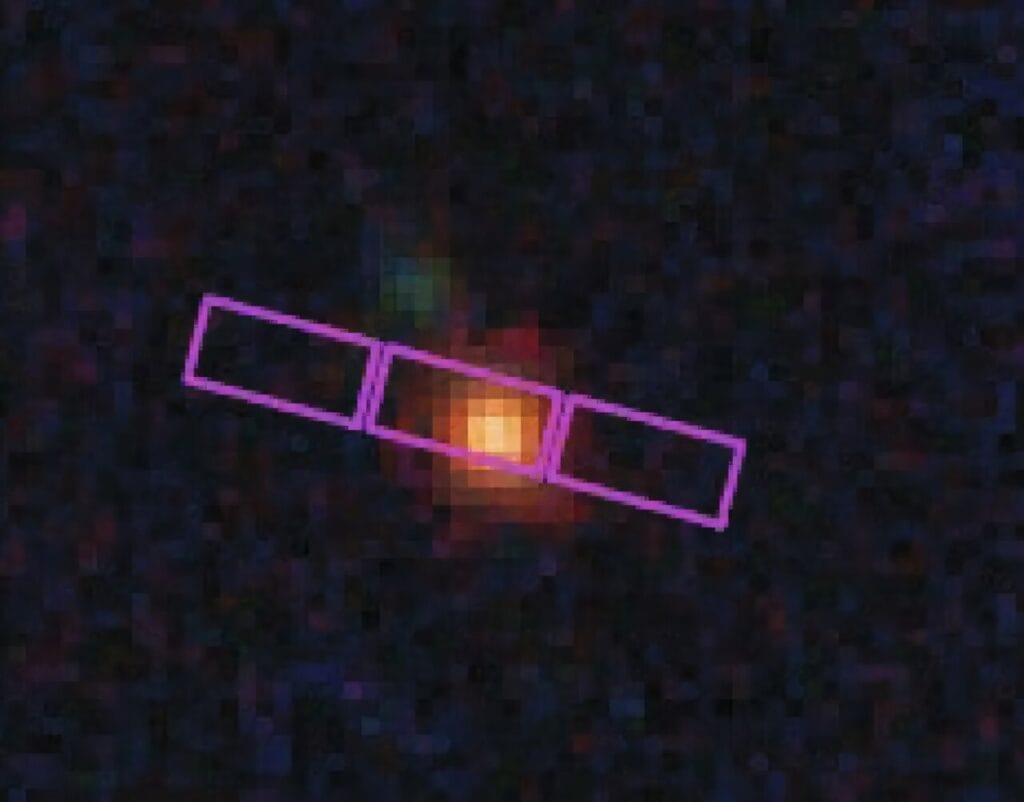
The fact that JWST captured several hundred of these rare events is nothing short of miraculous. It implies that these stars were common enough in the early universe that, even with their brief lives, a few still lingered in our observational window. Like fireflies in a dark forest, they glimmer briefly before vanishing into the black.
But though fleeting, these stars may hold the key to understanding how the modern universe came to be. If they truly are the seeds of the first supermassive black holes, then their role in cosmic history is foundational.
As the researchers write: “This short lifetime is consistent with the rarity of LRDs, suggesting they are a fleeting but crucial phase in galaxy and black hole formation.”
Occam’s Razor and a Simpler Truth
The beauty of this theory lies in its elegance. Unlike the AGN explanation, which requires separate mechanisms for emission, absorption, and continuum light, the SMS model explains everything in a unified picture. The strong hydrogen beta emission, the infrared flatness, the Balmer break—all of it can be accounted for by the structure and light of a single star.
In the spirit of Occam’s Razor—the philosophical principle that the simplest explanation is often the best—this model presents a compelling alternative. It doesn’t just fit the data. It makes the mystery more humanly comprehensible. We are not looking at a zoo of complex, chaotic galaxies. We are seeing the deaths of titanic stars, each one a cosmic lighthouse flaring for the last time.
On the Edge of Knowledge
Of course, no single study can close the case. Science thrives on skepticism and repetition. The SMS model, though beautiful, needs further testing. Future observations must explore the full population of LRDs, with even more detailed spectra and perhaps observations at other wavelengths. If future instruments—more powerful than JWST—can detect gravitational waves or other signatures from these short-lived stars, we may one day know for certain.
For now, we live in a liminal space—a frontier between hypothesis and truth. But even in uncertainty, there is beauty. The universe is not obligated to conform to our expectations. And sometimes, it whispers stories we’ve never heard before.
A New Chapter in the Cosmic Story
The story of the Little Red Dots is still being written. Like the first footprints on a new shore, they mark the beginning of something vast and profound. They ask us to reconsider our assumptions. To reimagine the dawn of time not as a smooth, predictable unfolding of galaxies and stars, but as a turbulent and exotic playground where titans lived briefly and died magnificently.
If the LRDs are indeed supermassive stars, then the universe is more creative than we gave it credit for. It birthed monsters of light and allowed us—billions of years later—to catch a glimpse of their final sigh.
In the end, whether these Little Red Dots are galaxies, quasars, or the long-sought supermassive stars, their significance is unquestionable. They represent the frontier of observation, the edge of knowledge, and the pulse of a universe that still has secrets to tell.
Reference: Devesh Nandal et al, Supermassive Stars Match the Spectral Signatures of JWST’s Little Red Dots, arXiv (2025). DOI: 10.48550/arxiv.2507.12618

